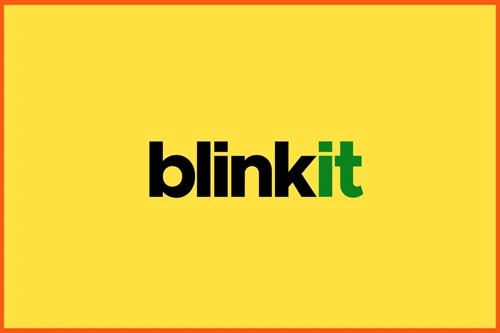Blinkit, formerly known as Grofers, is a leading player in India’s rapidly growing quick-commerce sector. Founded in 2013 by Albinder Dhindsa and Saurabh Kumar, Blinkit initially operated as an online grocery delivery platform. In 2021, the company rebranded itself as Blinkit to focus on the 15-minute delivery model for groceries and other essentials, capitalizing on the increasing demand for convenience and immediacy in urban areas. Blinkit was later acquired by Zomato in 2022, further strengthening its position in the hyperlocal delivery space.
This article explores Blinkit’s business model, revenue streams, and strategies that have propelled it to become a key player in India’s quick-commerce ecosystem.
Overview of Blinkit’s Business Model

Blinkit operates on a hyperlocal quick-commerce model, offering ultra-fast delivery of groceries, personal care products, household essentials, and more. The company connects consumers with local dark stores and vendors using its robust technology platform and optimized logistics.
Key Features of Blinkit’s Business Model:
- Quick-Commerce Delivery:
- Blinkit promises delivery within 15-20 minutes, focusing on instant gratification for urban consumers.
- Dark Store Network:
- The platform operates a network of dark stores (micro-warehouses) strategically located in high-demand areas to enable faster deliveries.
- Product Range:
- Blinkit offers over 5,000 SKUs, including groceries, personal care items, household products, and packaged foods.
- Data-Driven Operations:
- Blinkit uses AI and machine learning to predict demand, optimize inventory, and ensure real-time order tracking.
- Partnerships:
- The company collaborates with local suppliers, FMCG brands, and delivery partners to streamline its operations.
How Does Blinkit Earn Money?
Blinkit generates revenue through multiple streams, leveraging its quick-commerce model, partnerships, and technology-driven approach. Here’s how Blinkit earns money:
a. Delivery Fees
- Core Revenue Stream:
- Blinkit charges customers a delivery fee for orders. This fee varies based on factors such as:
- Order value (free delivery for orders above a certain threshold).
- Distance between the customer and the dark store.
- Surge pricing during peak hours or high-demand periods.
- Blinkit charges customers a delivery fee for orders. This fee varies based on factors such as:
- Delivery fees contribute significantly to Blinkit’s revenue, especially from low-ticket size orders.
b. Commission from Sellers
- Blinkit partners with local stores, suppliers, and brands to list their products on the platform. It earns a commission on sales, typically ranging between 10-20% of the product’s price.
- This commission incentivizes sellers to tap into Blinkit’s large customer base while ensuring a steady revenue stream for the platform.
c. Private Label Products
- Blinkit offers private-label brands, including packaged groceries, snacks, and household essentials. These products are manufactured or sourced in-house, offering higher profit margins compared to third-party brands.
- Examples include Blinkit’s in-house staples like rice, pulses, and cooking oil.
d. Advertising Revenue
- In-App Promotions:
- Blinkit earns revenue by offering advertising space to FMCG brands and local sellers. Brands pay for prominent placements, such as featured listings, banner ads, and personalized promotions.
- Sponsored Deals:
- Brands and sellers often run sponsored discounts or flash sales to increase visibility and drive sales, generating additional revenue for Blinkit.
e. Subscription Plans
- Blinkit offers subscription-based loyalty programs, providing benefits like:
- Free or discounted deliveries.
- Exclusive access to flash sales and promotions.
- Early access to new products.
- These subscription plans generate recurring revenue while fostering customer loyalty.
f. Partnership with Zomato
- Following its acquisition by Zomato, Blinkit has integrated with the food delivery giant’s ecosystem, creating opportunities for cross-selling. Revenue is generated through:
- Combined delivery services (e.g., bundling food and grocery orders).
- Leveraging Zomato’s extensive user base to drive order volumes.
g. Surge Pricing
- During high-demand periods, Blinkit implements dynamic pricing, charging higher delivery fees. This mechanism not only generates additional revenue but also helps manage order volumes and prioritize resources.
h. Bulk Orders for Businesses
- Blinkit caters to businesses, such as small restaurants, cafes, and office pantries, by providing bulk orders of groceries and essentials. Discounts for bulk purchases encourage businesses to use the platform, driving higher transaction volumes.
i. Data Monetization
- Blinkit leverages its vast consumer data to provide insights to brands and suppliers. These insights include:
- Consumer purchasing trends.
- Regional preferences.
- Demand forecasts.
- Brands use this data to optimize their offerings, and Blinkit earns revenue through data analytics services.
j. Strategic Partnerships
- Blinkit collaborates with FMCG companies and consumer brands to launch exclusive product lines or deliver promotional campaigns, earning fees for these partnerships.
Why Blinkit’s Model Works
Blinkit’s success lies in its ability to meet the growing consumer demand for convenience, speed, and accessibility. Here’s why its model works:
a. Speed and Convenience
- The promise of 15-minute delivery has positioned Blinkit as a go-to platform for last-minute grocery and essential needs.
b. Data-Driven Efficiency
- By using AI to predict demand and manage inventory, Blinkit ensures minimal wastage and faster delivery times.
c. Urban Consumer Focus
- Blinkit targets urban millennials and Gen Z, who value convenience and are willing to pay for ultra-fast services.
d. Dark Store Model
- The dark store approach ensures that products are stocked close to high-demand areas, enabling rapid order fulfillment.
e. Synergy with Zomato
- The acquisition by Zomato has provided Blinkit access to a vast user base, cross-selling opportunities, and shared infrastructure, enhancing its scalability and profitability.
Financial Performance
Revenue Growth
- Blinkit’s revenues have grown rapidly, crossing an estimated ₹1,200 crores in FY 2023, driven by high order volumes and partnerships with FMCG brands.
Order Volume
- The platform processes over 150,000 orders per day, with an average order value of ₹500-600.
Funding and Valuation
- Before its acquisition, Blinkit raised over $800 million from investors like SoftBank and Sequoia Capital. Its valuation reached approximately $570 million at the time of its Zomato acquisition.
Challenges and Opportunities
Challenges
- High Operational Costs:
- Maintaining a vast network of dark stores and managing last-mile delivery is cost-intensive.
- Competition:
- Blinkit faces stiff competition from players like Swiggy Instamart, Zepto, and BigBasket.
- Profitability Pressure:
- Quick-commerce models often struggle with thin margins due to high logistics and operational expenses.
Opportunities
- Tier 2 and Tier 3 Cities:
- Expanding into smaller cities offers significant growth potential as internet penetration and disposable incomes rise.
- Partnerships with FMCG Brands:
- Collaborating with more brands for private-label products and exclusive launches can boost margins.
- Subscription Growth:
- Scaling its loyalty programs can ensure consistent revenue and customer retention.
Future Prospects
Blinkit is well-positioned for growth as it continues to leverage its strong brand presence, rapid delivery promise, and integration with Zomato. Key focus areas include:
- Expanding its dark store network in Tier 2 and Tier 3 cities.
- Increasing partnerships with FMCG brands for exclusive product lines.
- Introducing innovative subscription plans to build a loyal customer base.
- Enhancing profitability through operational efficiencies and dynamic pricing strategies.
Conclusion
Blinkit’s business model exemplifies the potential of quick commerce in India’s evolving retail landscape. By focusing on speed, convenience, and data-driven operations, Blinkit has carved a niche in the hyperlocal delivery market. As it expands its offerings and optimizes its operations, Blinkit is well-positioned to capitalize on the growing demand for ultra-fast deliveries, making it a key player in shaping the future of e-commerce in India.

